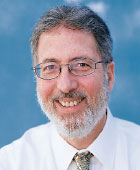The Return of Psychedelics: A Measured Approach
Abstract

After decades of quiescence, psychedelics are back and making quite a ruckus. In the 1950s and 1960s, a flurry of cutting-edge psychedelic research engendered real enthusiasm among clinicians, suggesting potential treatment efficacy for a range of serious refractory disorders. But a cultural and political backlash led to the imposition of draconian laws, effectively sidelining psychedelic research for decades, until scientists slowly began to again explore their potential. Even then, limited funding and only faint interest from the mainstream meant that substantial and rigorous psychedelic studies did not resume until the 21st century.
In the last several years, however, generous funding—almost entirely from private sources—has spurred this nascent field, attracting new investigators who are ready and enthusiastic about exploring novel clinical treatment applications, particularly with treatment-resistant psychopathologies, including alcohol and other substance use disorders, obsessive-compulsive disorder, chronic posttraumatic stress disorder, and the existential demoralization and anxiety in terminal patients at the end of life.
The field of psychedelic medicine is rapidly expanding and is perceived as heralding a paradigm shift in treatment models and outcome expectations. It is, therefore, an appropriate time to examine the benefits and potential risks of psychedelic therapies as the evidence continues to accumulate and therapists anticipate adding a critical new tool to the therapeutic setting.
The field of psychedelic studies holds much promise, both to further our understanding of neurobiology and the development of more effective treatment models for people suffering from conditions poorly responsive to conventional treatments. In our enthusiasm, however, we must not neglect the very real risks of potential adverse effects. They can occur, and on occasion they can be serious. But with careful screening of subjects and establishing optimal set and setting, from the dawn of psychedelic research into our modern era, the consensus of investigators has been that deleterious outcomes can be minimized.
Many of today’s frequently administered psychopharmacological treatments have a range of potentially dangerous side effects. By taking necessary precautionary measures, however, clinical experience has demonstrated that such medications possess favorable risk-to-benefit ratios and are therefore considered valuable. While we should be fully cognizant of the potential for negative outcomes with psychedelics, it is important to avoid the temptation to inflate the degree of genuine risk and (once again) deny responsible researchers and clinicians the opportunity to establish effective parameters for this novel and potentially valuable treatment model.
The rapidly growing phenomenon of the commercialization of psychedelic research—with numerous for-profit companies proliferating, often with troubling motives and worrisome potential influences—is a cause for concern and must be countered by maintaining strong ethical structures that may not necessarily be compatible with mandates to maximize investor profits.
While undergoing considerable and at times exhilarating growth over the past few years, the field of psychedelic studies now faces a variety of serious challenges. It is important that therapists acknowledge the array of potential risks involved with the administration of psychedelics, both in approved and nonapproved contexts. This is essential not only to protect the health and well-being of patients and other users, but also to safeguard the integrity and viability of the field.
Pioneer researchers of psychedelics during the 1950s and 1960s made important discoveries that heralded remarkable treatment breakthroughs, or so it seemed. Beyond learning from the lessons of the past, it is vital to re-examine these early findings that so excited investigators of that era so we can determine whether such remarkable treatment outcomes can be replicated. And, if they can, what does this imply for our current models of health delivery? Will there be equitable access? Will all necessary steps be taken to ensure not only subjects’ and patients’ well-being, but for public health as well?
It will be critical to establish structures that adhere to the Hippocratic Oath that collectively we, above all, do no harm. Psychedelics are powerful amplifiers of consciousness. In the wrong hands, they can induce aberrant and pathological states of mind. In the right hands and in the right context, psychedelics hold great potential to facilitate states of psychospiritual transcendence that may reliably eventuate in highly salutary outcomes. But the opportunity to explore this potential will inevitably rest on the establishment and maintenance of effective safety and ethical structures that must form the foundation of this as yet to be realized field. ■
References
Grob, C.S. and Grigsby, J (Eds.). Handbook of Medical Hallucinogens. New York, Guildford Press, 2021.
Cohen, S. Lysergic Acid Diethylamide: Side Effects and Complications. Journal Nervous Mental Drugs. 130:30-40,1960.
Johnson, M.W, Richards, W.A. and Griffiths, R.R. Human Hallucinogen Research: Guidelines for Safety. Journal Psychopharmacology. 22:603-620, 2008.
Grob, C.S. Psychiatric Research With Hallucinogens: What Have We Learned? Heffter Review Psychedelic Research. 1:8-20, 1998.
Anderson, B.T, Danforth, A.L. and Grob, C.S. Psychedelic Medicine: Safety and Ethical Concerns. Lancet Psychiatry. 7:829-830, 2020.



